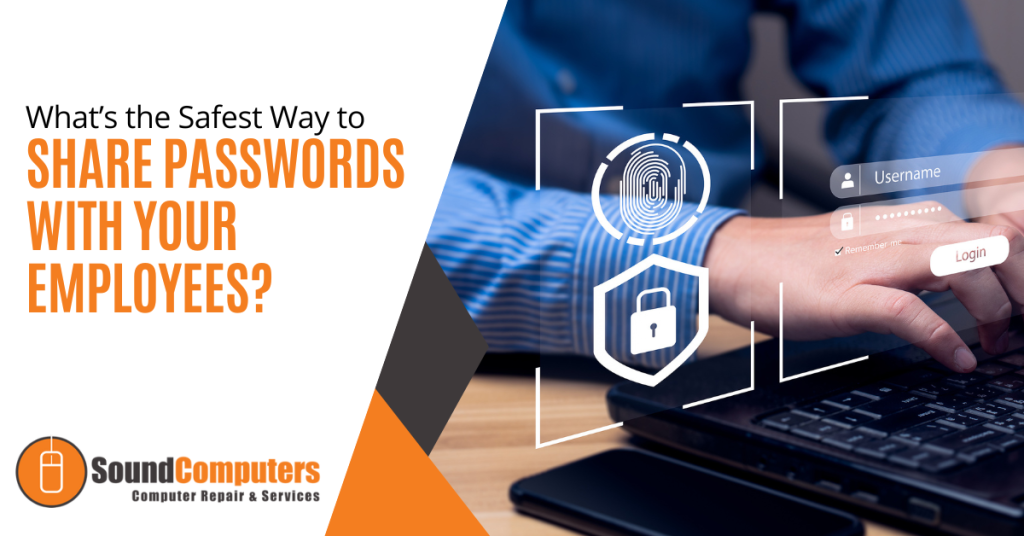
In the digital age where sensitive information is often guarded by passwords, businesses face a common challenge: how to securely share passwords with employees. Whether it is granting access to critical systems, sharing login credentials for shared accounts or providing temporary access to new hires, the need to share passwords is unavoidable.
However, doing so in a secure and manageable manner is paramount to protect your organization’s sensitive data and maintain robust cybersecurity. In this comprehensive guide, we will explore the safest ways to share passwords with your employees while minimizing security risks and ensuring operational efficiency.
The Dangers of Unsafe Password Sharing
1. Password Exposure
Sharing passwords through insecure channels (such as email or unencrypted messaging apps) exposes them to potential interception by cybercriminals. This can result in unauthorized access to sensitive data.
2. Lack of Accountability
When passwords are shared indiscriminately, it becomes challenging to trace who accessed specific accounts or systems and makes it difficult to maintain accountability.
3. Compromised Credentials
If an employee leaves the organization or changes roles, failing to revoke access promptly can lead to unauthorized access by former employees and pose a significant security risk.
Secure Password Sharing Practices
To ensure the safest way to share passwords with your employees, consider implementing these best practices:
1. Password Manager Tools
Utilize password manager tools designed for team collaboration. These tools allow you to securely store and share passwords with authorized team members. Access can be controlled and password changes are logged to ensure accountability.
2. Role-Based Access
Implement role-based access control. Grant employees access only to the specific accounts or systems necessary for their roles. This minimizes the risk of unauthorized access.
3. Secure Messaging
If you must share passwords through messaging apps or email, use secure and encrypted communication platforms. Ensure that sensitive information is shared using end-to-end encryption.
4. Temporary Access
When providing temporary access to employees or contractors, set a predefined expiration date for passwords. This ensures that access is revoked automatically when no longer needed.
5. Two-Factor Authentication (2FA)
Require employees to use 2FA wherever possible. Even if someone gains access to a password, they won’t be able to log in without the second authentication factor.
Password Sharing Do’s and Don’ts
Do’s
- Educate Employees: Train employees on secure password practices. This includes the importance of not sharing passwords outside of authorized channels.
- Regularly Update Passwords: Routinely update and change passwords. This is especially important for shared accounts.
- Monitor Access: Keep track of who has access to sensitive accounts and systems and review this access periodically.
- Use Strong Passwords: Encourage the use of strong and unique passwords for all accounts and implement a password policy.
Don’ts
- Avoid Sticky Notes: Discourage the practice of writing down passwords on sticky notes or other physical media.
- No Plain Text: Never share passwords in plain text via email, chat or any unencrypted platform.
- Don’t Reuse Passwords: Reusing passwords across multiple accounts increases the risk of a breach.
The Role of Sound Computers in Secure Password Sharing
At Sound Computers, we understand the complexities and security challenges surrounding password sharing in organizations. We specialize in providing comprehensive cybersecurity solutions including robust password management tools and best practices. Our expertise can help your organization implement secure password-sharing protocols, protect sensitive data and strengthen your overall cybersecurity posture.
Secure Your Passwords Today
Sharing passwords with employees is an essential part of modern business operations but it must be done securely to mitigate cybersecurity risks. Adopting secure password-sharing practices, using the right tools and educating employees about safe password practices are critical steps in protecting your organization’s sensitive data.
Remember that the security landscape is constantly evolving and it is crucial to stay vigilant. If you have concerns or need assistance with password management and cybersecurity, don’t hesitate to contact us. At Sound Computers, we are committed to helping you navigate the complex world of cybersecurity and safeguarding your digital assets.
